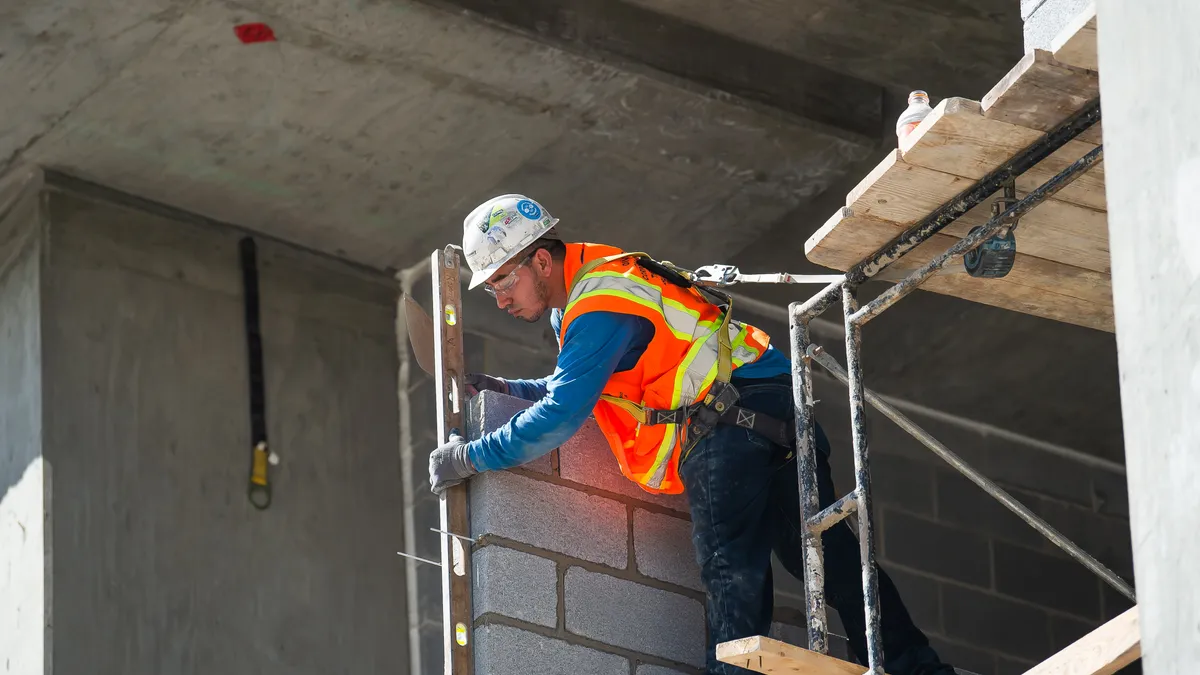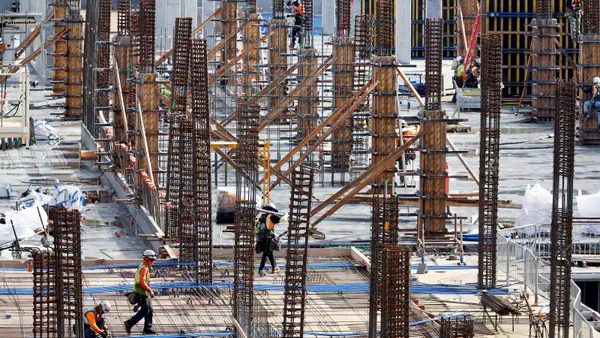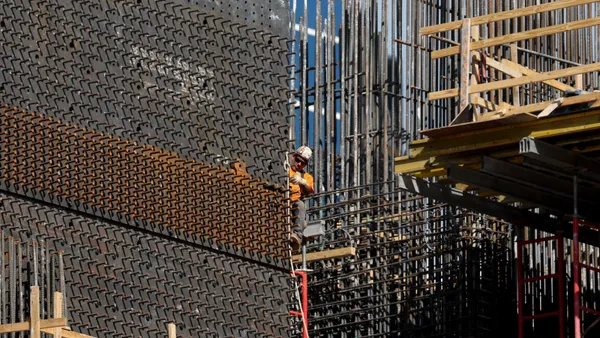Dive Brief:
- Investment in nonresidential structures fell at an annual rate of 15.3% in the third quarter and has now contracted in 10 of the past 12 quarters, according to an Associated Builders and Contractors analysis of data released by the U.S. Bureau of Economic Analysis.
- That decline, the steepest contraction since the second quarter of 2020, follows a 2.6% annualized rate growth in the U.S. GDP in the third quarter. Investment in the residential sector tumbled 26.4%, according to the ABC.
- Nevertheless, contractors remain optimistic about the construction outlook, said Anirban Basu, chief economist at ABC.
Dive Insight:
The increase in borrowing costs in 2022 has yet to make its statistical mark on much of the economy, said Basu.
The Federal Reserve will likely raise its benchmark interest rate by three-quarters of a percentage point again on Wednesday, its sixth interest rate bump of the year, reports the Wall Street Journal.
“Today’s GDP report could be considered the calm before the storm,” said Basu in the release. “Growth is likely to slow significantly going forward, but for now, the U.S. economy continues to expand as consumers keep spending on travel and goods, even in the face of significantly elevated inflation.”
Nevertheless, contractors remain “somewhat upbeat,” said Basu. More than 47% of contractors expect their sales to rise over the next six months, according to ABC’s Construction Confidence Index.
ABC’s Backlog Indicator jumped to nine months in September, about 1.4 months higher than in September 2021. That’s largely due to an increase in heavy industrial projects, including a 21.5% year-over-year increase in manufacturing-related construction spending, according to the ABC.
“The construction confidence and backlog metrics appear strong despite the U.S. economy facing headwinds like inflation, financial market volatility and rapidly rising borrowing costs,” said Basu in last month’s release. “Contractors remain decidedly upbeat, with backlog expanding and expectations for rising sales, employment and profit margins over the next six months.”
Total construction starts declined 19% in September, according to a Dodge Data & Analytics report. But that drop in starts should not be considered a sign of a pending pullback in the construction industry, said Richard Branch, Dodge chief economist, in the report.














